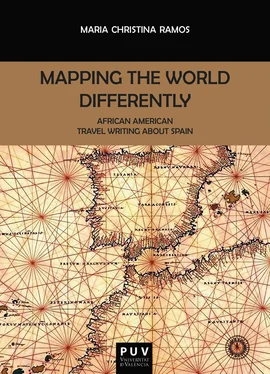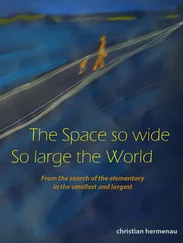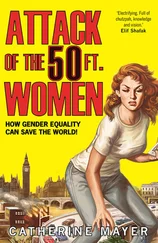Maria Christina Ramos - Mapping the World Differently
Здесь есть возможность читать онлайн «Maria Christina Ramos - Mapping the World Differently» — ознакомительный отрывок электронной книги совершенно бесплатно, а после прочтения отрывка купить полную версию. В некоторых случаях можно слушать аудио, скачать через торрент в формате fb2 и присутствует краткое содержание. Жанр: unrecognised, на английском языке. Описание произведения, (предисловие) а так же отзывы посетителей доступны на портале библиотеки ЛибКат.
- Название:Mapping the World Differently
- Автор:
- Жанр:
- Год:неизвестен
- ISBN:нет данных
- Рейтинг книги:3 / 5. Голосов: 1
-
Избранное:Добавить в избранное
- Отзывы:
-
Ваша оценка:
- 60
- 1
- 2
- 3
- 4
- 5
Mapping the World Differently: краткое содержание, описание и аннотация
Предлагаем к чтению аннотацию, описание, краткое содержание или предисловие (зависит от того, что написал сам автор книги «Mapping the World Differently»). Если вы не нашли необходимую информацию о книге — напишите в комментариях, мы постараемся отыскать её.
Mapping the World Differently — читать онлайн ознакомительный отрывок
Ниже представлен текст книги, разбитый по страницам. Система сохранения места последней прочитанной страницы, позволяет с удобством читать онлайн бесплатно книгу «Mapping the World Differently», без необходимости каждый раз заново искать на чём Вы остановились. Поставьте закладку, и сможете в любой момент перейти на страницу, на которой закончили чтение.
Интервал:
Закладка:
But why was Spain the place Wright used to explore his larger questions about the human response to political oppression when it is clear in his introduction that he had experienced oppression in other places? And why did his journey into Spain precipitate the striking image of a journey into Africa at the end of his introduction? We can begin to see answers to these questions in a letter from Wright to his agent, Paul Reynolds, in which he proposes that his book about Spain would show “how a non-western people living in Europe work out their life problems” (qtd. in Fabre 411). His proposal reveals assumptions about the Spanish people’s relation to the rest of Europe. Spain, for Wright, provides an example of otherness located within the West. Though ostensibly part of Europe, Spain’s proximity to Africa and its longstanding association with cultural otherness make it an intriguing location for study. Spain is mapped by Wright as a liminal space, a contact zone through which one can study complex issues concerning the relationship of the West to the rest of the world without leaving Europe itself. The Spanish people and culture would provide insight into the various national, cultural, and racial identities that have traditionally been used to create the idea of a “West” that is distinct from other locations around the globe.
Wright’s book is not the only travel writing that uses Spain to investigate these issues; indeed, Wright is not the only well-known African American writer to produce an extensive piece of travel writing about Spain. Claude McKay and Langston Hughes both recount their travels in Spain during the 1930s in travel memoirs and poetry. McKay narrates his initial trips through Spain at the start of that decade in his memoir A Long Way from Home (1937) and develops Spanish themes in several poems from his “Cities” cycle (c. 1934), some of which are included in the memoir. Langston Hughes describes his experiences in Spain in 1937 in a series of articles reporting on the Spanish Civil War for the Baltimore Afro-American , articles that he later integrated into his travel memoir I Wonder as I Wander (1956). Moreover, Spain’s Civil War becomes the subject of some of Hughes’s most provocative poetry of the 1930s. In addition to these non-fiction examples of African American travel writing about Spain, Frank Yerby made Spain and Spanish figures the subject of his popular fiction, which he referred to as “costume novels.” In particular, his 1965 novel An Odor of Sanctity , subtitled A Novel of Medieval Moorish Spain , is centered on the epic journey of its hero, a Christian Goth named Alaric, through the Iberian peninsula during the tumultuous years of Arab-Berber dominance in the South. The novel highlights the political and social exchange of the Christian, Muslim, and Jewish cultures present during the medieval period in the Iberian peninsula. These authors are joined by figures such as Arthur Schomburg, Nella Larsen, Chester Himes, and Dorothy Peterson, who left documents of their travel and—in the case of Himes, Peterson, and Yerby—their expatriation to Spain. The existence of this archive of texts prompts the question that sparked this book: What made Spain a compelling site for exploration by a number of prominent African American figures during the twentieth century?
Mapping the World Differently provides a close reading of the representations of Spain in twentieth-century African American travel writing. In particular, it investigates a series of questions about what can be observed in these representations.
First, as travel writing, these texts record the authors’ lived experiences traveling in Spain, experiences that are very much shaped by their perceptions of themselves as black writers traveling outside of the U.S. How, then, is an African American identity explored and developed in relation to Spain in this travel writing?
Second, as texts about place, these works are not simple transcriptions of the writers’ interactions with a stable, clearly understood location. While they describe interactions in particular moments with the physical and social reality of a place called Spain, they also reflect the writers’ interactions with a host of previous representations of Spain, stories existing about the place that are evoked by the presence of the landscape and people themselves. In this way, these texts describe interactions with discursive constructions of Spain as much as any interactions with a “real” place. 4 What is the Spain that they these writers perceive and represent?
And third, as literary texts these works do not simply mimic reality; rather, they create a reality imagined by the writers. If we read these texts as productions that map out a perspective of and through Spain, what is the landscape that they present? How do they map Spain’s place in the world even as they map out these writers’ positions in relation to the worlds around them?
Resulting from an examination of these questions, this study argues that twentieth-century African American travel writing about Spain is concerned with the power of geographic imagination in shaping our relationships to others around the globe. Revising accepted imaginative geographies 5 rooted in early modern European colonial conceptions of the world, these travel narratives use the vantage point of Spain in an effort to create new maps of the globe, opening up possibilities for reconceiving transnational black identities. Central to this project are the transformative literary maps of Spain narrated within these works. Spain is mapped as one site within a network of interconnected sites, pulsating with the ebb and flow of exchange across space and time. The perceived liminal position of Spain—geographically (between Europe and Africa), historically and culturally (between West and East), and politically (between liberal secularism and religious totalitarianism)—enables challenges to the static traditional European divisions of global space. Similarly, individual identities are mapped like networked spaces, as relational and always in flux, as seen in the recurring use of one of the most common figures of representation in these works, the “Moor,” whose ethnic, racial, religious, and status identities are constantly shifting. The indeterminate nature of the Moor’s identity, both as a marker of difference and as an image allowing a variety of affinities and alliances, provides these African American writers with a figure through which to reconsider the value of transnational back identities. These works, therefore, not only create specific visions of Spain but also use Spain as a lens through which to reconstruct global spaces with the goal of shaping the global relations that are constructed by and within these spaces.
In Chapter 1, I will provide a context for this book, noting the key threads of scholarship and concepts that have shaped my approach to analyzing African American travel writing about Spain. It begins with a rationale for studying this particular archive of travel writing and includes a brief survey of the Anglo and Anglo-American representations of Spain that the African American travel literature in this study is revising. It also provides background for my specific geographic approach to these narratives, including a discussion of literary cartography and an introduction to contemporary counter-cartographic methods that can be applied in African diasporic studies.
Chapter 2 examines the travel writing about Spain by two key figures associated with the Harlem Renaissance, Claude McKay and Langston Hughes, whose experiences with Spain occurred during the 1930s. In memoirs and poetry, McKay and Hughes represent Spain as a location from which larger global issues of their time can be framed and understood. In particular, the work of these writers combines reflections on the Spanish situation in the turbulent 1930s and reflections on U.S. race politics, creating a commentary on black identity, nationalism, and cosmopolitan/transnational politics. To do this work, they invoke the medieval Islamic empire in Spain and employ the figure of the Moor as a central metaphor for understanding and representing various forms of national and racial identity. In the process of creating these narratives, we can also see these writers recovering a tradition of travel for developing political theory. In particular, McKay and Hughes focus on travel and the resulting engagement with the other—whether imagined in the past or present—as a path to engaged reflection on self and home.
Читать дальшеИнтервал:
Закладка:
Похожие книги на «Mapping the World Differently»
Представляем Вашему вниманию похожие книги на «Mapping the World Differently» списком для выбора. Мы отобрали схожую по названию и смыслу литературу в надежде предоставить читателям больше вариантов отыскать новые, интересные, ещё непрочитанные произведения.
Обсуждение, отзывы о книге «Mapping the World Differently» и просто собственные мнения читателей. Оставьте ваши комментарии, напишите, что Вы думаете о произведении, его смысле или главных героях. Укажите что конкретно понравилось, а что нет, и почему Вы так считаете.












